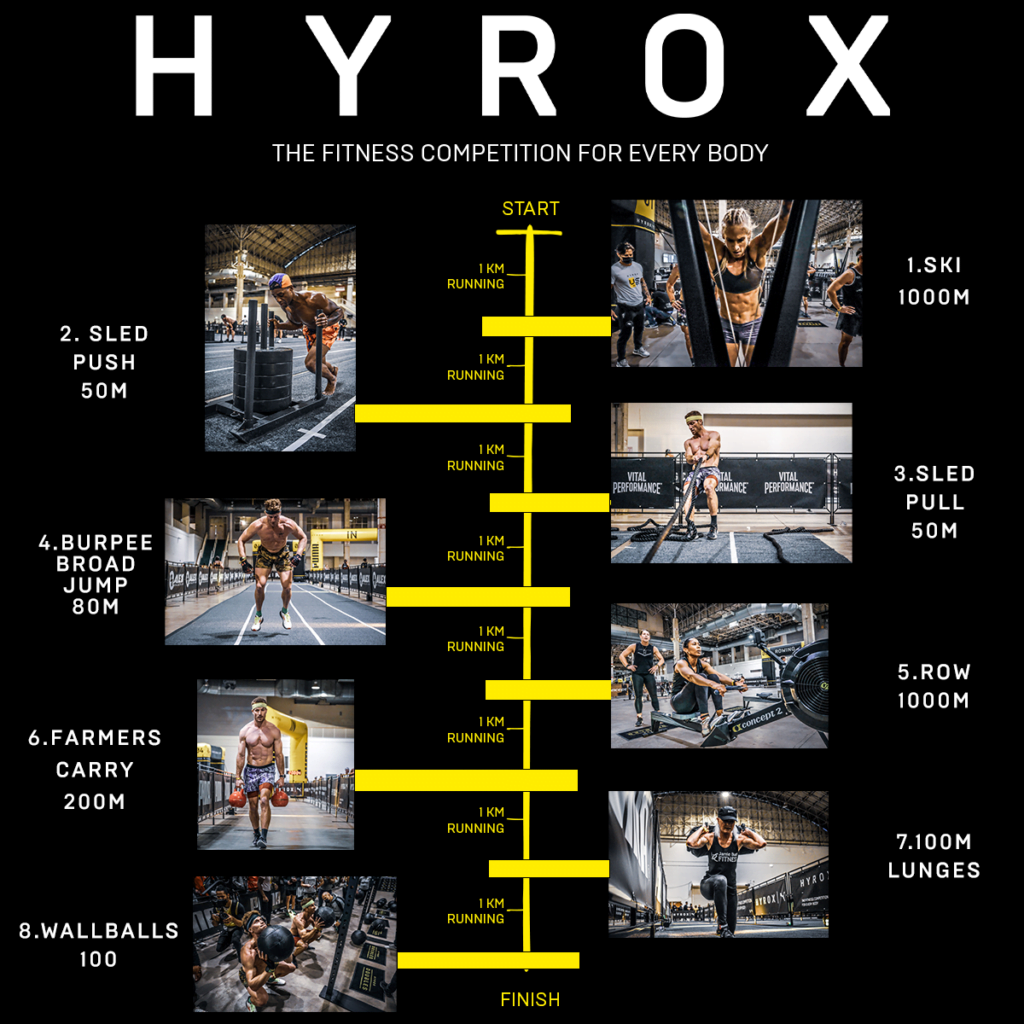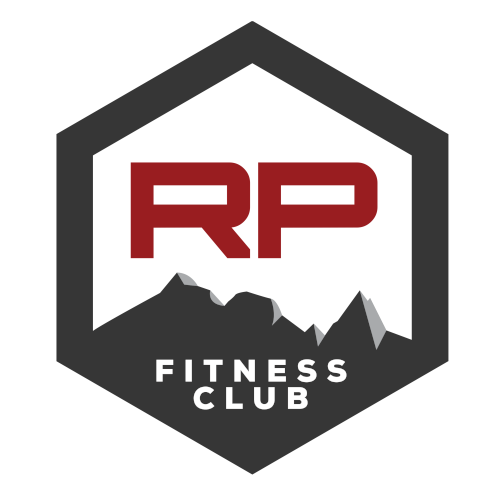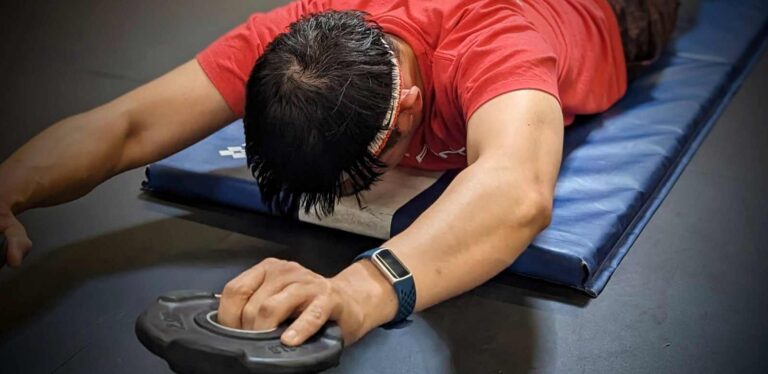Preparing for Hyrox Competition: Essential Tips for Success
If you’re gearing up for a Hyrox competition, you’re probably feeling a mix of excitement and trepidation. This unique fitness challenge combines endurance, strength, and functional exercises, making it a true test of your overall fitness levels. To truly excel, you need a well-rounded training plan that addresses the specific demands of the event.
Hyrox races involve eight functional exercises along with running, so it’s vital to incorporate these elements into your training regimen. Sport-specific training not only familiarizes you with the exercises but also helps build the necessary strength and endurance. Consistency and gradual progression are key to avoiding injuries and ensuring you peak at the right time.
Remember, even seasoned athletes find themselves humbled by the heavy sleds and demanding transitions between exercises. Preparing mentally and physically will give you a significant advantage, making the race day experience more rewarding. Dive into your training with commitment, and you’ll be ready to dominate the Hyrox competition.
Getting Started with Hyrox Training
Before diving into Hyrox training, familiarize yourself with the competition format and evaluate your fitness level. This will help tailor your training plan to ensure effective preparation, whether you’re a beginner or aiming for the pro division.
Understanding the Competition
Hyrox competitions consist of a unique blend of running and functional exercises. You will encounter eight 1-kilometer runs paired with events such as sled pushes, rowing, and wall balls. This requires not only endurance but also strength and flexibility.
Hyrox is designed for all fitness levels. Beginners can start at a comfortable pace, while experienced athletes may aim for the pro division, where weights and repetitions are more challenging. Your training should reflect the competition’s structure to condition your body adequately.

Assessing Your Current Fitness Level
Begin by evaluating your current fitness level. This includes identifying your strengths and areas for improvement in both cardio and resistance exercises.
- Cardio: Assess your running endurance by timing your 1-kilometer runs.
- Strength: Test your performance on functional exercises like sled pushes and rowing.
Keep a journal to track your progress. Note how you feel after workouts, as this can guide adjustments to your training plan. It’s crucial to recognize your starting point to set realistic goals and milestones, ensuring gradual and safe improvement for beginners and experienced athletes alike.
Developing Your Training Schedule
Crafting an effective training schedule for a Hyrox competition involves combining strength training, cardiovascular endurance exercises, and appropriate rest and recovery periods. Each component plays a critical role in ensuring you are physically prepared for the event.
Incorporating Strength and Conditioning
Strength training is essential for Hyrox preparation. Focus on functional exercises that mimic race movements such as squats, lunges, and deadlifts. Incorporate exercises that develop power and muscular endurance.
- Hinge: Deadlifts
- Squat: Front squats
- Lunge: Walking lunges
- Push: Bench press
- Pull: Pull-ups
- Drag: Sled drags
- Carry: Farmer’s walk
- Jump: Box jumps
Aim for 2-3 sessions per week, progressively increasing weight and intensity.
Building Cardiovascular Endurance
Cardiovascular fitness is crucial for endurance events like Hyrox. Incorporate running sessions that include interval runs, tempo runs, and long runs.
- Interval runs: Short bursts at high intensity, followed by rest.
- Tempo runs: Sustained efforts at a challenging pace.
- Long runs: Steady pace over extended distances.
These runs build both endurance and cardiovascular fitness. Aim for 3-4 cardio sessions per week, mixing short and long distances.
Planning Rest and Recovery
Proper rest and recovery ensure you avoid burnout and stay injury-free. Schedule rest days and active recovery into your training week.
- Rest days: No intense physical activity to allow muscle repair.
- Active recovery: Light activities like walking or yoga.
Ensure you prioritize good sleep and adequate hydration. Allowing time for warm-up and cool-down routines is also critical.
By balancing strength, cardio, and recovery, you will optimize your training and be well-prepared for your Hyrox competition.
Specific Skill Work and Drills
Preparing for a Hyrox competition involves honing both functional movements and Hyrox-specific exercises. This ensures you can efficiently tackle the various physical challenges the event presents.
Mastering Functional Movements
Functional fitness movements form the foundation of Hyrox training. Squats, lunges, and deadlifts are essential for building the strength and endurance needed. Practice variations like weighted lunges and barbell squats to target different muscle groups.
Incorporate exercises like burpee broad jumps which combine cardio and strength. Wall balls and sandbag lunges should be routine to improve explosive power and stability. The goal is to perform these movements fluidly and efficiently, minimizing energy expenditure while maintaining high performance.
Perfecting Hyrox-Specific Exercises
Hyrox competitions include unique exercises like the sled push, ski erg, and rowing machine. Regularly practice the sled push to build leg and core strength. Alternate this with the sled pull to ensure balanced development.
The ski erg and rowing machine are critical for cardio endurance. Mix interval sprints with steady-state sessions on these machines. Practice sequences that mimic the event’s order, such as transitioning from the ski erg to wall balls.
If you want to be “game-day reay”, you’ll want to get some exposure and experience on these specific exercises well ahead of time.
Nutrition and Lifestyle for Peak Performance
For peak performance in a Hyrox competition, what you eat and how you take care of your mental and physical wellness are crucial. This section explores the importance of a balanced diet and maintaining mental resilience for optimal results.
Optimizing Your Diet for Training
Eating the right foods impacts your energy levels and overall performance. Carbohydrates are key because they fuel your muscles. Aim for complex carbs like whole grains, sweet potatoes, and oats.
Pre-workout: 2-3 hours before, have a balanced meal with carbs, protein, and fats. Examples: chicken with rice and vegetables or a fruit with avocado and eggs.
Post-workout: Focus on recovery with a mix of protein and carbs. Try a protein shake with a banana or a turkey sandwich if you tolerate gluten.
Proper hydration can’t be overstated. Drink plenty of water throughout the day and consider electrolyte drinks during intense training. This helps in maintaining performance levels and preventing injury from dehydration.
Maintaining Balance: Rest and Mental Health
Rest is as important as active training. Integrate rest days into your schedule to allow muscles to recover, which helps prevent injuries and improves long-term performance.
Mental toughness and resilience are pivotal. Techniques like mindfulness, meditation, or even a hobby can help manage stress and anxiety. Quality sleep is another critical element.
Consistency matters. Aim for 7-9 hours of sleep per night to recover fully. This helps maintain a strong lactate threshold, allowing you to perform better and feel less fatigued during competition.
Balancing your diet and lifestyle will ensure you are at your best mentally, physically, and emotionally.
Interested in starting or improving your Hyrox training? Come visit us at Rocky Point Fitness in Coquitlam BC.







